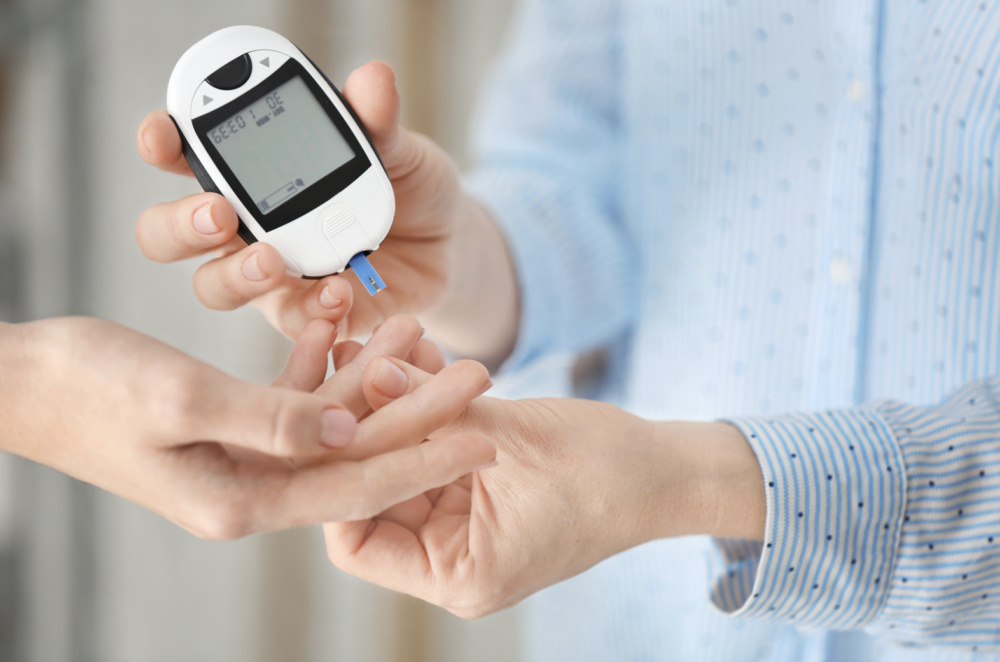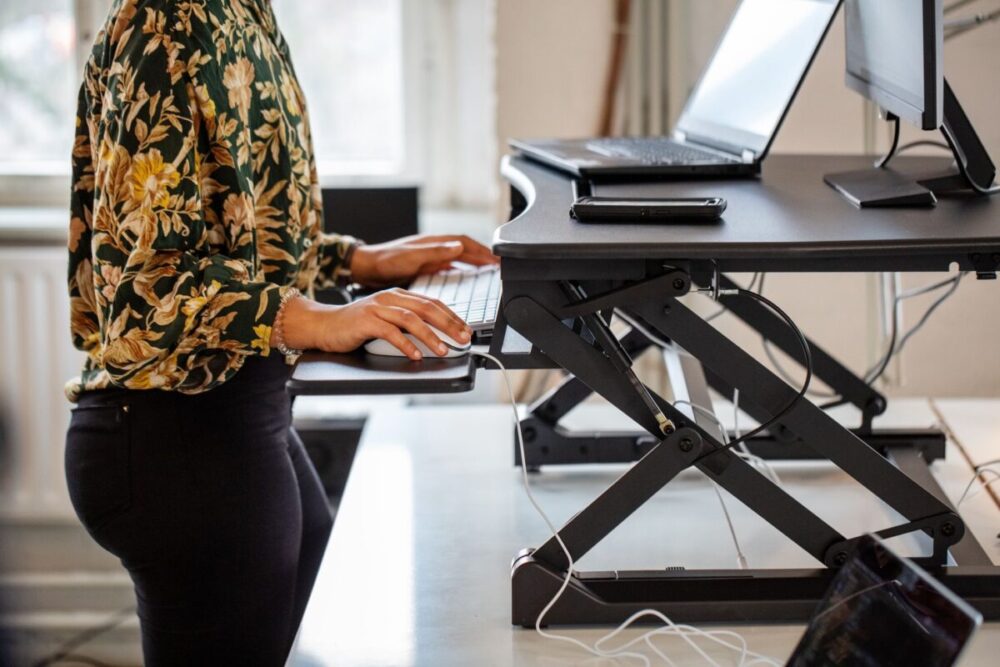
Traditional desk occupations need a lot of sitting, but more and more individuals are choosing standing desks these days. These higher desks are designed to get you up and moving, at least occasionally.
Are Standing Desks Beneficial to You?
Yes, using a standing desk at work is a terrific way to improve your health. We are aware that spending the entire day sitting down might be bad for your physical, mental, and emotional well-being. Standing for extended periods of time can increase your productivity and improve the quality of your job.
Standing workstations have six positive health effects.
These are some of the reasons why transitioning to a standing desk can be beneficial for virtually everyone.
Better Posture
Standing helps you maintain better posture and reduces muscle aches and strains, all of which can prevent you from entering a productive work flow.
A reduction in stress
Stress can be caused by or made worse by muscle tension, which can also cause headaches and insomnia. Utilizing a standing desk to avoid spending hours slouched in a chair enhances both your work performance and experience as well as your life outside of the office.
Lower Risk of Type 2 Diabetes

The detrimental effects of blood sugar and fat metabolism, which directly influence a person’s risk of diabetes, are lessened by standing. In one study, women at risk for type 2 diabetes whose prolonged sitting was broken up showed decreased glucose, insulin, and NEFA responses.
Optimal Weight
There is a little increase in calorie burn when standing at a desk compared to sitting, and some studies show a small weight loss. Standing can aid in weight reduction mostly because it makes it more likely that you will move around (e.g., adjust your weight, pace, etc.), which further boosts calorie expenditure.
Additionally, standing provides you with more energy, which increases your likelihood of working out at the end of the day rather than collapsing onto the sofa because you’re exhausted and drained.
Reduced Heart Disease Risk
Standing for extended periods of time on a regular basis can lower cholesterol and blood sugar levels, preventing heart disease.
Standing for extended periods of time on a regular basis can benefit the heart more than occasional vigorous exercise.
Need for Caffeine is Reduced
Standing naturally boosts energy levels, so users can consume less coffee, which can increase anxiety and frequently results in a slump in the afternoon.
Stand-up desks are provided by The Standing Desk.
The Standing Desk’s collection of standing workstations can accommodate a wide range of people with diverse health and lifestyle challenges.
Air-powered desks
Pneumatic workstations that are quick and silent raise and lower the desk surface using air pressure instead of electricity. These air-powered desks benefit not just the environment but also human health thanks to thoughtful material selections including highly recyclable steel frames and recycled wood substrate surfaces.
A pneumatic desk with casters adds maximum mobility and frees you from being bound to an outlet.
Elevated desks

Strong, long-lasting desks that use electricity to lift and lower the desk surface are known as electric desks. These sit-stand desks are among the strongest currently available because of the electric power increase, and the brushless motor makes them quiet as well.
Question and Answer Sheets (FAQ)
Do you prefer standing over sitting?
Due to the epidemic of sitting, which has been caused by office employment becoming more and more sedentary over the past few decades, sitting has a poor reputation. In actuality, both standing and sitting have their proper times and settings. An ergonomic, easily adjustable sit-stand desk that encourages you to do both is the secret to getting the best of both worlds.
How Effective Is a Standing Desk for Lower Back Pain?
Yes. Lower back pain in office employees is frequently brought on by prolonged desk labor. Standing desks are one strategy that can help reduce persistent lower back discomfort over time, according to studies.
Alternating between sitting and standing ensures posture changes that can reduce inactivity and let you move to your most comfortable position on your own. Indeed, our bodies function best when we are able to change postures as needed in response to joint discomfort or tired muscles.
Is Standing Heart Healthy?
Yes. We are aware that prolonged sitting heightens the negative effects of blood sugar and fat metabolism, directly influencing a person’s risk of heart disease. One method to help lower the danger is to stand.
Lipoprotein lipase is an enzyme that breaks down fat in the blood and prepares it for usage by muscles during exercise. Exercise physiology research claims that inactivity suppresses lipoprotein lipase, leaving fat in circulation and raising the risk of heart disease. Sitting really causes a 90% reduction in lipoprotein lipase synthesis. Stand up to ensure that your body can utilize fat as it was intended, rather than storing it.
Do You Burn Calories Standing?

Yes, because more muscles are used when standing than when sitting stationary, standing burns more calories. According to one study, standing alone burns roughly 8 extra calories per hour than sitting, a tiny difference that over time adds up.
There is a rationale behind why even the simplest actions affect how much energy we use throughout the day. Moving keeps fat-burning enzymes active, which helps you burn more calories than you would by staying sedentary. It all builds up over days, weeks, and years. Even more, calories are expended if you incorporate additional movement into your workspaces, such as a desk bike or an under-desk treadmill.
Is Standing All Day Healthy?
No. In fact, standing all day can be just as bad for your body as sitting all day, giving you cramps and back pain in your legs and back. Long periods of standing have been linked to numerous issues, including lower back pain, weariness, and discomfort, according to studies. However, after they’ve gotten used to it, many people utilize standing desks like standing for extended periods of time.
How long ought I to stand each day?
Different people will require different amounts of sitting and standing. Numerous ergonomic specialists advise beginning slowly and increasing the amount of time spent standing (5–15 minutes per hour) as you get used to using a standing desk.
The largest benefits are obtained when standing, moving around, and moving for at least two hours during an eight-hour workweek. And keep in mind that every bit of movement you get throughout the day counts, whether it be going to the bathroom or the conference room, taking a quick lap around the house or workplace, or stretching for a few seconds. Simply put, using a standing desk makes it simpler to accomplish your main objective.
Use a Standing Desk that is Adjustable to Feel Your Best.
A height-adjustable standing desk from The Standing Desk is the simplest approach to really make a difference if you want to stay healthy while working.








